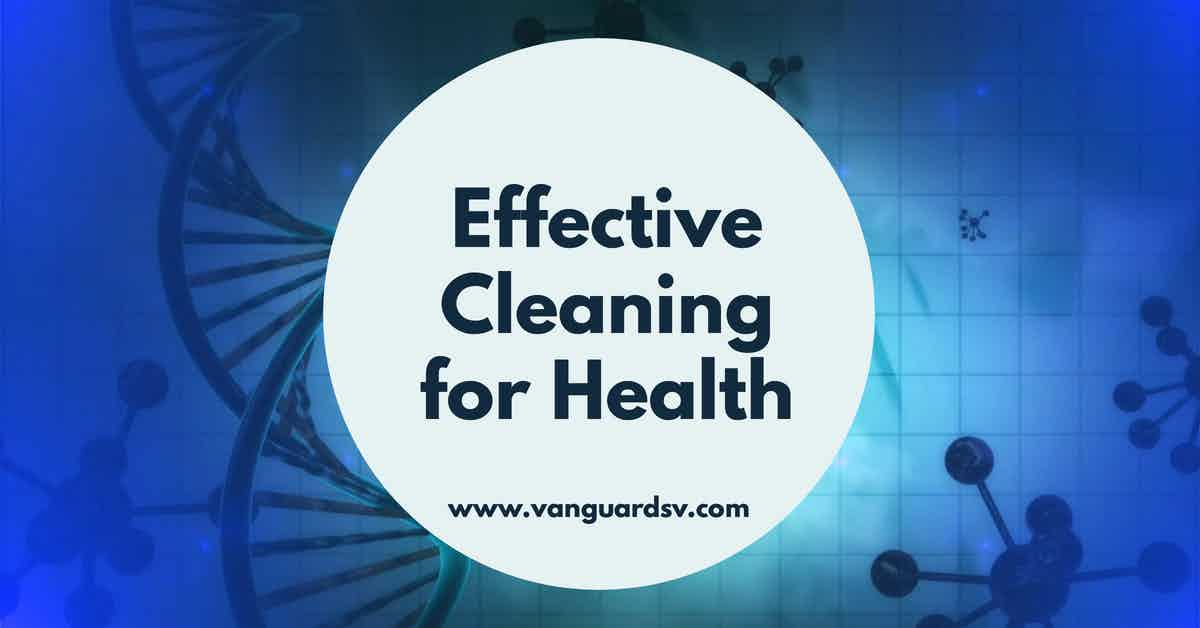Despite the recent focus on the airborne spread of SARS-CoV-2, the vast majority of viruses are spread via touch, either directly with a contagious host or indirectly from a contaminated surface, underscoring the value of effective cleaning for health programs.

The Science Behind Cleaning for Health
In general, cleaning is considered the process of removing unwanted matter from surfaces for the purpose of:
- Eliminating the presence of dirt, soil, oils, and other matter.
- Reducing the detectable levels of pathogens, pathogenic bacteria, mold, mildew, and other illness-causing microbes, and;
- Removing allergens and other biohazards from the environments occupied by humans.
Cleaning for health emphasizes occupant wellness--mental, physical, psychological, and emotional--over appearance.
That is not to say that cleaning for health leaves the facility in a drab or undesirable condition, merely that the focus--and so the selection of products, equipment, and processes--is primarily on short and long-term human health, which mandatorily includes the natural environment and the management of resources.
Effective cleaning for health processes include:
- Knowledge of the surfaces being sanitized, the contaminates being eliminated, the products being used, and the risks involved based on the contents of the chemicals and the typical demographics of the facility.
- The removal of unwanted material from all surfaces within a facility, including dirt, germs, and bacteria, and;
- The transportation and disposal of unwanted material, bio-waste, and hazardous materials using environmentally responsible methods.
The science of cleaning, like all sciences, tells us that all systems are connected, so each step is singularly vital and critical for each subsequent step.
Failing to appropriately perform high-quality work in one area of cleaning, such as poor product knowledge or undesirable disposal methods, compromises the system as a whole and jeopardizes human health and safety.
Facility Hygiene and Disease Prevention
Akin to personal hygiene, high-quality facility hygiene and sanitation processes maintain the health of occupants by preventing the spread of disease.
A strong indicator of a hygienic facility, and a carryover from the focus on cleaning for appearance, is a building absent of visible dirt and malodorous smells, which strongly implies the absence of pathogens on surfaces and hidden bacteria.
A facility cleaned with a focus on occupant health will also be absent the smell of masking perfumes, toxic disinfectants, and other chemicals scientifically proven to contribute to poor indoor air and environmental quality, which detracts from human health and performance.
A high-performance clean for health program will also focus on processes intended to eliminate the cross-contamination of surfaces throughout a facility through a combination of team cleaning, area mapping, color coding, and specialized cleaning tools and methods that prevent the mixing of dirty contaminated water with cleaning products.
Additionally, depending on the facility type, typical occupant demographics, and regulatory guidance, products that are manufactured in a manner and comprised of chemicals that reduce the strain on natural environments and significantly reduce or eliminate the potential for long-term human health issues will be used in place of conventional commercial cleaning and disinfection products.
Waste Removal and Disposal
The final phase of an effective clean for health program focused on long-term human health and wellness is the removal and disposal of unwanted waste materials and products.
Conventionally, unwanted physical waste was taken to a dumpster and removed by the local sanitation company, and wastewater and any accompanying chemicals were dumped down the drain of a sink in the janitor's closet.
The repercussions of these actions are no longer unseen.
Landfills produce massive amounts of pollution that contribute to increasing respiratory issues, such as asthma, in local populations, and groundwater, streams, and other public waterways are contaminated with the chemical toxins commonly found in many cleaning and disinfectant products.
Reduce, reuse, and recycle programs combined with the conscientious purchase and use of environmentally preferable cleaning and disinfection products significantly improves occupant health and productivity while simultaneously reducing the burden humans place on the natural environment.
References & Resources
Takeaway
Germs and bacteria will always be a part of our lives.
However, as recent events have demonstrated, high-performance clean for health programs are critical to the removal of deadly pathogens and pathogenic bacteria, maintaining facility hygiene, and ensuring human health and safety.
Outsourcing is a proven method for quickly and effectively onboarding critical clean for health services at a fraction of the expense and overhead associated with maintaining a similar service in-house.
If you would like more information regarding the effectiveness of high-performance infection prevention and control measures, or if you would like to schedule a free, no-obligation onsite assessment of your facility's custodial needs, contact us today for a free quote!
In Bakersfield, CA, call (661) 437-3253
In Fresno, CA, call (559) 206-1059
In Valencia CA, or Santa Clarita CA, call (661) 437-3253
In Palmdale, CA or Lancaster, CA, call (661) 371-4756

